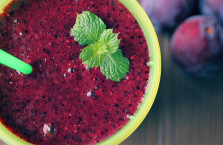Protein is a recurrent problem for vegetarians and vegans. Protein is a key nutrient needed to form muscles, so it can’t simply get cut out of one’s diet. Unfortunately, protein mostly comes from animal sources. Without eating meat or eggs, it can be tricky to get the necessary amount.
Fortunately, protein comes in a variety of sources. So with some searching and a bit of knowledge, it can be a simple matter to regain the necessary nutritional value.
Why Bother With Meatless Protein?
The benefits of getting your protein from meatless sources have less to do with protein itself than with what else you’re eating. Vegetarian diets naturally have more nutritious foods in them that can assist in preventing a host of health conditions and help you lose weight.
The significant lack of cholesterol in a vegetarian diet can help improve heart health, fiber can improve feelings of fullness, and you will get more essential vitamins to boost bone health, immune strength, and many other bodily functions. It’s also worth noting that the World Health Organization has recently linked regular processed meat intake to an increased risk of colon cancer, so getting that out of your system can keep you free of carcinogens.
6 Meatless Protein Sources
So, without meat, how do you get your protein? It’s tricky, but not too hard overall. Here are some possibilities to consider:
1. Nuts

Peanuts, walnuts, pistachios, almonds, cashews, and more are all fine sources of protein. Nuts are great for a quick snack or to use as an extra ingredient in dishes to add heightened flavor. Natural peanut butter also falls under this category: It can be in the form of a traditional peanut butter sandwich, used in a delicious fruit dip, or as a smoothie ingredient for taste and thickness.
Although nuts contain extra nutrients like fiber, calcium, potassium, and iron, they also have a noticeable fat content. Fortunately, nuts contain the good kind of fat, but you should still avoid overindulging. A quarter cup of peanuts has nine grams of protein, walnuts have four grams, and pistachios have six grams.
2. Seeds

Which has more protein: 100 grams (g) of sunflower seeds or the equivalent amount of a sirloin steak? You may be surprised to know that the amounts are actually comparable—around 20 g of protein each. Seeds, whether sunflower, sesame, pumpkin, hemp, or otherwise, are similar to nuts in that they are something you can munch on their own or mix into a variety of dishes.
Since they’re easy to digest, seeds are often preferred by people with intestinal troubles. The anti-inflammatory properties of seeds, like hemp, can help soothe agitated parts of the body. A quarter cup of pumpkin seeds has nine grams of protein, sesame has six grams, and sunflower seeds have eight grams.
3. Legumes

Whether as a side dish, mixed with veggies, added to a bean dip, used as a thickener in soup, or mashed up as a patty or puree, legumes have a lot of options for dietary inclusion—and they are well deserved. Lentils have protein comparable to a chicken breast (26g of protein per 100g) and black beans are handy for managing blood sugar levels in diabetics.
They are low in fat and sodium, cholesterol free and rich in potassium, iron, and magnesium levels. It’s easy to see why this group is a good choice for meatless protein! One cup of cooked black beans or chickpeas has 15g of protein and lentils have 18g.
4. Soy

Edamame (soybeans) are not only delicious, they are rich in protein and isoflavones. Tofu does not have the same level of protein content as other items here, but it is a very versatile food that can be used to replace meat, noodles, or other items easily.
The same applies to tempeh, which can be a great meat substitute and it also improves cardiovascular health. Edamame has 29g of protein per cup while four ounces of tempeh have 21g and a similar amount of tofu has nine grams.
5. Dairy

Cow’s milk and soy milk actually have comparable protein levels (3.3g per 100g) so which you use depends on whether you want to go vegetarian or vegan. Calcium helps bones and teeth and the fat content is relatively low as well.
Cheese can also be a handy ingredient or stand-alone snack and yogurt is always welcome as a breakfast meal, snack, or as the base of a dessert dish. One ounce of Swiss cheese has eight grams of protein and cheddar has seven grams. One cup of fat-free yogurt can have as much as 14g.
6. Seitan

Special mention needs to go to seitan and its spectacular protein content. This wheat gluten can be used to make meat or noodle substitutes and offers low sodium, low carbs, and is high in iron and calcium. Since it is literally gluten, seitan isn’t advisable for everyone. If you can have it though, it is highly recommended. About 100g of seitan has 75g of protein, more than enough to meet the daily requirement.
Tips for Meatless Eating
While it is possible to just dive in and cut meat out of your diet, not everyone can make such an abrupt transition. Instead, try taking smaller steps to move towards a meat-free diet that meets your protein needs:
- Pick a few of your favorite meat dishes and use meat substitutions such as seitan or tofu.
- When you begin the meatless diet, use meat substitutions in meals that are less dependent on the meat for their flavor (e.g. meals that make use of sauces like marinara or sweet-and-sour sauce). This will make the change in flavor slightly less jarring.
- Start small with “meatless Mondays” or similar once-a-week periods. Then gradually extend the meatless moments until they cover the whole week.
Move meat from a main part of the meal to a side dish. Instead of chicken breast with a side of greens, for instance, try a salad with chicken strips.
Visit DoctorsHealthPress for the original article along with more health tips!













